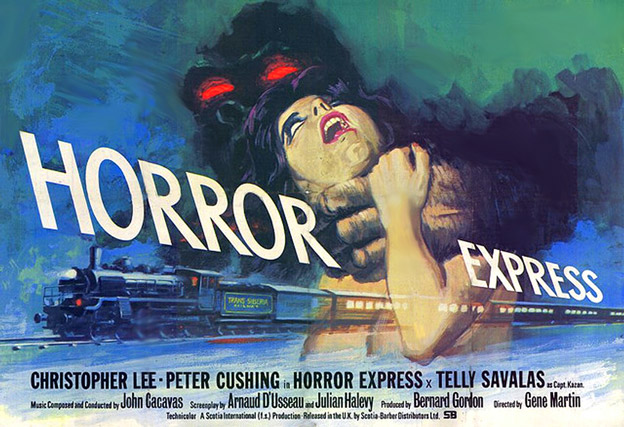2011, Author: Marcus Hearn, Publisher: Titan Books, Hardcover, 176 pages
Titan have been releasing books dedicated to Hammer studios for the last four years inclusive now, and it's become a bit of a tradition each Christmas for me in particular to be leafing through their latest outing. The first three (The Hammer Story, Hammer Glamour, and The Art of Hammer) are all essential parts of the book collections of any Hammer - or even general cinema - fan. The first thing I noticed about this one is that it is not in the same format: whereas the others were portrait style, this one is landscape (keeping more so in line with other 'Vault' books that are currently on the market). There goes the relevance of the space I'd left on my shelf specifically for this one! The second difference is that there's no dust jacket with this new book. Otherwise initial thoughts on presentation are positive - the hardback cover is well designed and quality is very high throughout.
The point of the book is to chronologically present to the reader 'vault' materials on many of Hammer's better and lesser known movies, right from their first big genre success The Quatermass Xperiment, through to the present day for the revival movies Let Me In and The Resident. This includes promotional artwork, front of house stills, newspaper cuttings, posters, photographs from behind the scenes, script pages (sometimes scrawled on), magazine covers, production sketches, letters, etc. In fact just about anything you could think of. All of this is laid out 'scrapbook' style with each film also represented by a few paragraphs of text providing some background history and other nice details. Whilst nothing of this sort could ever be considered comprehensive (which would realistically be impossible anyway) it is beautifully presented, colourful, and insightful. This is the sort of book you can leave lying around and pick up any time to look through randomly selected pages, either to read or just to pleasure your eyes. One thing that I've derived from this publication in particular is a respected acknowledgement of Tom Chantrell's work. Often Hammer would commission a poster based on an idea plus a title alone and Tom would draft something to promote the tentative production - these are fantastic works of art and I think worthy of a book alone should Titan/Hearn ever think there would be enough of an appreciative audience out there to get working on it.
Not necessarily the best in the series, this is nevertheless a gorgeous book and another essential release by Titan. My only question now is, what on earth could they do for another Hammer book next year?
Not necessarily the best in the series, this is nevertheless a gorgeous book and another essential release by Titan. My only question now is, what on earth could they do for another Hammer book next year?
















